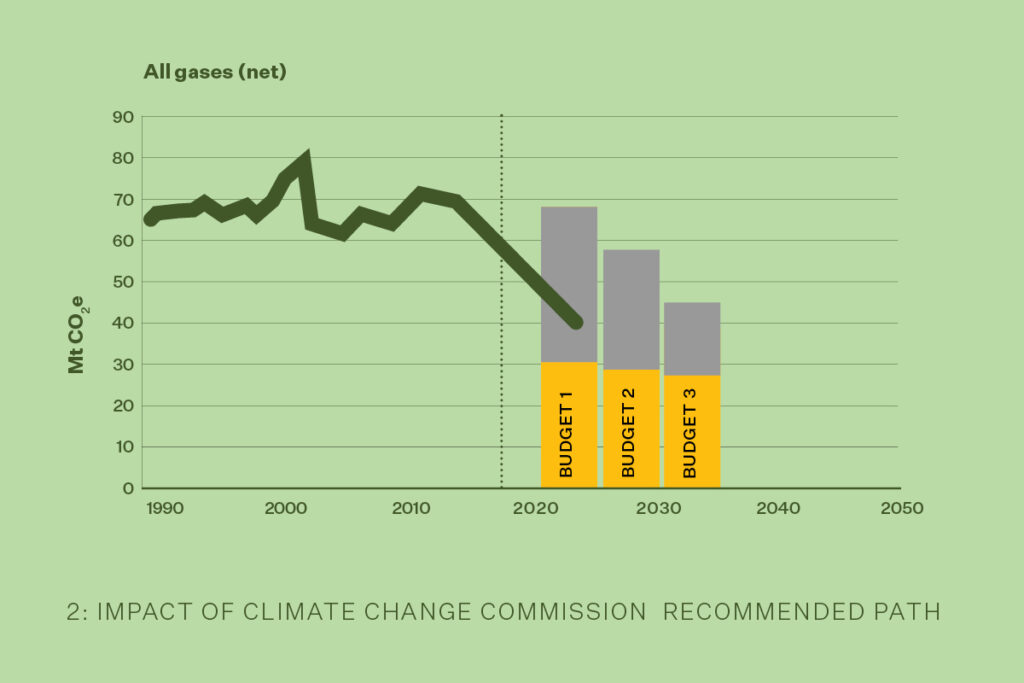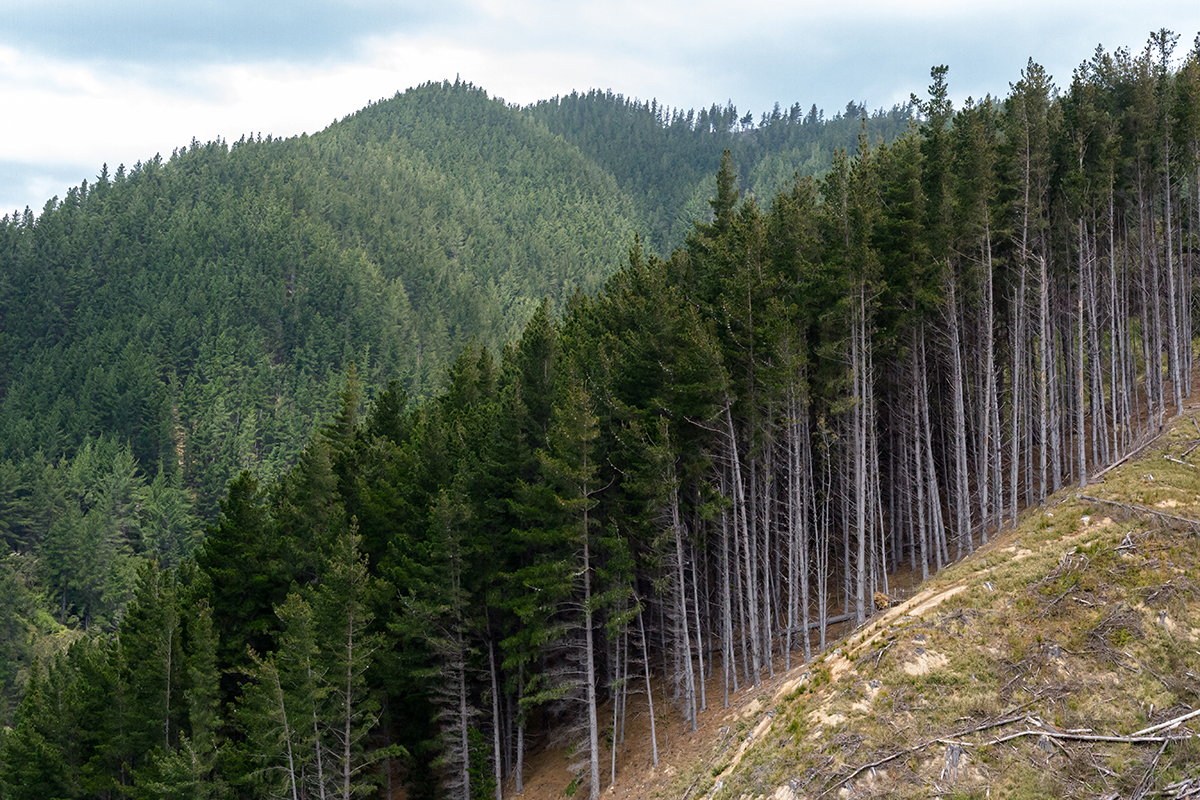Of course the biggest development recently regarding climate change mitigation on the global scale was the defeat of Donald Trump. President Biden has pulled the US from the denier abyss with already a huge collection of executive appointments, orders and actions, including re-commitment to the Paris Agreement.
Here in New Zealand, PM Ardern and Climate Minister Shaw would do well to be studying the full range of initiatives Biden has undertaken to mobilise the entire executive branch around the urgency of this issue.
But while we eagerly await evidence of that urgency from Government, we can take hope from the sweeping recommendations recently made by the Climate Change Commission.
As required by the Zero Carbon Act (enacted 2019), the Commission has presented its first three ‘budgets’ which recommend detailed pathways for how NZ should meet its national goals for greenhouse gas reductions as well as meet its international obligations. Each budget covers a five-year window, reaching to 2035.
Public consultation on these draft budgets has been underway and the Commission must promulgate its final recommendations by May 31. The Government must take the non-binding recommendations into account when adopting its official climate plan no later than December 31.
Clearly presenting the disappointing reality, Commission documents that current policies do not put NZ on track to meet its recommended emissions budgets or the existing 2050 targets. Emissions would decline, but not enough.
In 2018, gross greenhouse gas emissions in Aotearoa were about 45.5 Mt CO2-e of long-lived gases, and 1.34 Mt CH4 (biogenic methane). “Our analysis shows if policy stayed as it is now, Aotearoa would fall short of achieving the 2050 net zero long-lived gas target by 6.3 Mt CO2-e. Biogenic methane would reduce 12% below 2017 levels and fall short of the current target of 24-47%.”
Below is our current profile.

However, the Commission has concluded that “there are achievable, affordable and socially acceptable pathways for Aotearoa to take”.
As the chairman, Dr Rod Carr writes: “Now we must decide where our ambition lies … To achieve a cleaner, greener, healthier and more sustainable future, no emission reduction is too small – or too soon … This means we need to change how we get around, and rethink what we produce and how we produce it. We need to reconsider what we buy, what we do with what we have used, and how we can reuse more of what we have left over.”
So what needs to be done?
Strategically, achieve real reductions. The report strongly emphasises that NZ must decarbonise and reduce emissions at the source and not rely on forests to meet our climate change targets: “We can’t plant our way out of climate change”. Nor should we avoid real reductions by ‘buying’ our way out with overseas offsets.
Most important – and probably most politically contentious – is what happens on the land. In 2018, agriculture emissions made up about 90% of biogenic methane and 18% of long-lived gas emissions (CO2e). The Commission calls for reducing animal numbers and better animal, pasture and feed management. Dairy, sheep and beef animal numbers would reduce by around 15% from 2018 levels by 2030. This compares with an 8-10% reduction projected under current policies.
“To achieve a cleaner, greener, healthier and more sustainable future, no emission reduction is too small – or too soon … This means we need to change how we get around, and rethink what we produce and how we produce it. We need to reconsider what we buy, what we do with what we have used, and how we can reuse more of what we have left over.”
DR ROD CARR, CLIMATE CHANGE COMMISSION CHAIR
The Commission says that farmers can make changes now to reduce emissions on their farms while maintaining, or even improving, productivity, estimating that NZ can achieve methane reductions of 24% by 2050 without any technology developments, such as vaccines or inhibitors.
As for trees, the Commission notes that pine trees will still play an important role in getting to 2050 and could support a future bioeconomy, as bioenergy to replace fossil fuels and as timber for building. Additionally, existing forests, small blocks of trees, soils and wetlands can all store more carbon. The report calls for work to better understand this potential and how to include this in accounting systems.
The other flash point in the recommendations involves transportation and particularly Kiwis’ love affair with their cars.
In 2018, transport emissions made up 36.3% of total long-lived gases. The Commission notes that emissions from domestic transport have continued to rise even as emissions from other sectors (e.g., farming-produced methane) stabilised or decreased.
Yet the Commission insists NZ – given existing and fast improving technology – can cut almost all transport emissions by 2050. The technology already exists and is improving fast. “We want to see the majority of the vehicles coming into New Zealand for everyday use electric by 2035.” No further internal combustion engine light vehicles would be imported after 2032. The goal: at least 50% of all light vehicle (cars, SUVs, vans and utes) and motorbike imports should be electric by 2027 (both battery EV and plug-in hybrid EV).
Recall that the Government in its first term, under resistance from NZ First, abandoned its rather whimpy intention to require more fuel-efficient cars and financially incentivise EVs.
The Commission advocates moving freight off the road and onto rail and shipping, gives the customary nods to public transport and cycleways, and says the use of low-carbon fuels, such as biofuels and hydrogen, needs to increase, particularly in heavy trucks, trains, planes, and ships.
Heating, industrial processes and power represent the third key area of focus. In 2018, heat, industry and power emissions made up 41% of total long-lived gases. Most significantly here, the Commission calls for sharp reductions in the use of coal, eliminating it in food processing (by 2037) and public and commercial buildings, phasing out coal fired baseload generation, and shifting throughout the economy to electricity produced renewably.

All in, the Commission targets increasing renewable energy to at least 60% by 31 December 2035.
The Commission sums up the potential impact of its recommended path over the fifteen years to 2035 in the graph below.
There’s a heap of detail in the Commission’s 187-page report and recommendations, which are supported by 577 pages of evidence.
The argument going forward will be about pace, the policy mix and fairness across sectors. It should not be about the facts presented in this meticulous body of work, and it cannot be about the goals.
As NZ charts its domestic path to mitigate greenhouse emissions, the nation’s contribution to the global effort must also be weighed.
The Commission finds that the Government’s commitment (under the Paris Agreement, the current global benchmark) to reduce net emissions by an average of 30% from 2005 emissions levels over the 2021-2030 period is not compatible with global efforts to limit global warming to 1.5°C above pre-industrial levels.
The Commission observes: “If Aotearoa is to play its part as a developed nation, the NDC (Nationally Determined Contribution) would need to be strengthened to reflect emission reductions of much more than 35% below 2005 levels by 2030.”
Such further reductions for NZ would go beyond the pathways the Commission has recommended at present. And so the Commission kicks this one to touch: “We consider that these judgements, and the decision on the level of international commitment, should be made by the elected government of the day.”
BayBuzz will report on the Commission’s final recommendations and the crucial debate over the coming year that will test the Prime Minister’s leadership and resolve.


